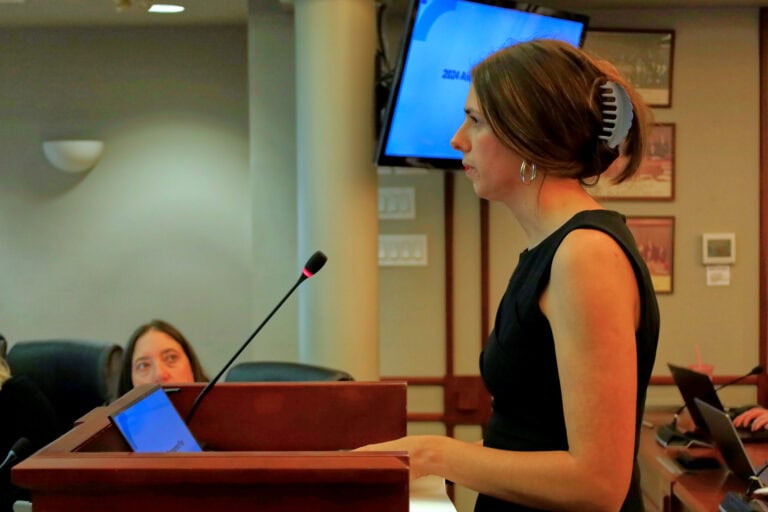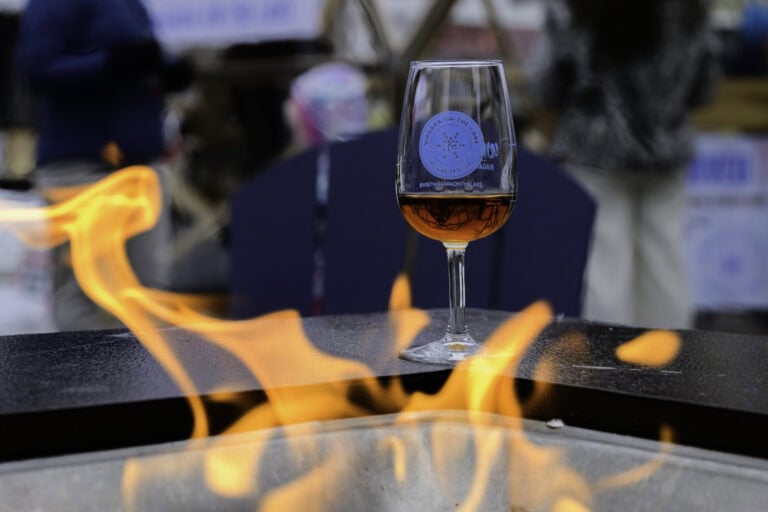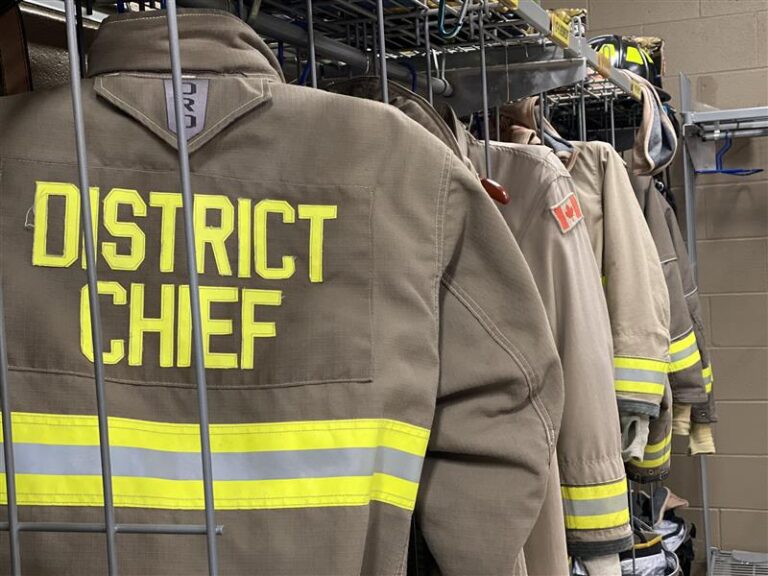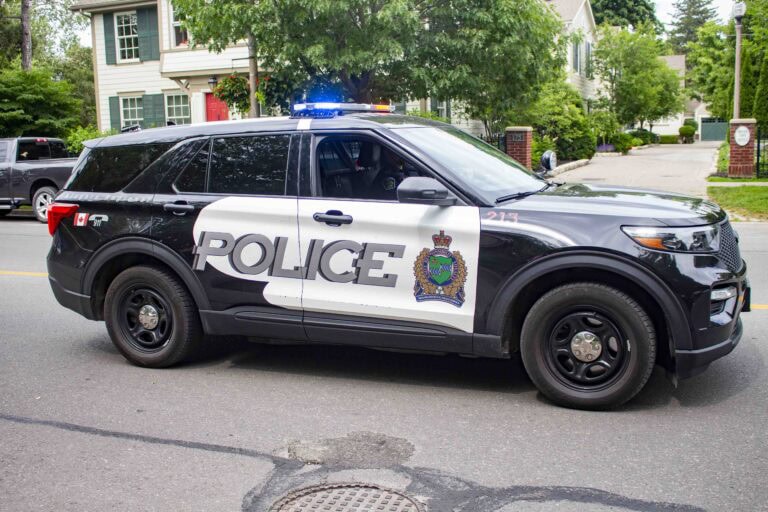Maj. Benjamin Geary was honoured for his actions on Hill 60 in Ypres
Gary Hatton wants the world to never forget soldiers like Benjamin Geary.
For the last five years after every Remembrance Day service at the cenotaph, Hatton, a retired Royal Canadian Navy captain, has been paying his respects by visiting a single gravestone in St. Mark’s Anglican Church cemetery.
It's the resting place of Maj. Benjamin Handley Geary, who earned the Victoria Cross for bravery during The Great War and later lived and died in Niagara-on-the-Lake.
“It makes a big impression on me,” Hatton said in an interview.
“I was quite impressed that our little town of Niagara-on-the-Lake has a Victoria Cross winner. We’ve only got 99 Canadian Victoria Cross winners.”
Geary was born in London in 1891 and at age 23 he enlisted in the British Army’s East Surrey Regiment and fought on the Western front during the First World War.
He earned the Victoria Cross, the highest military honour the British Empire and Commonwealth countries can bestow, while in action at Hill 60 near Ypres, Belgium.
Geary was honoured for his bravery in holding a crater with his company of men between April 20 and 21, 1915, according to the original Victoria Cross citation published in the London Gazette in October 1915.
The description of Geary’s actions in the face of the enemy is certainly the stuff of legend.
“The crater was first exposed to very heavy artillery fire, which broke down the defences, and afterwards throughout the night to repeated bomb attacks, which filled it with dead and wounded,” the citation reads.
The attacks were all repulsed due to the “splendid personal gallantry and example” of Geary.
“At one time he used a rifle with great affect, at another threw hand grenades, and exposed himself with entire disregard to danger in order to see by the light of flares where the enemy was coming from.”
When Geary and his troops were not engaged in direct combat he focused his efforts on ensuring ammunition and supplies were readily available for the soldiers.
Then, just before daylight on April 21, Geary took a sniper bullet to the head. But that didn't stop him.
True to the descriptions of his gallant nature and although his vision was severely impaired due to the injury, Geary returned to the front for the remainder of the war where he commanded a company of men until he was shot three more times during battle in 1918, according to the Canadian War Museum.
But this was one tough man and “the following year I was playing rugby, football etc,” Geary wrote in a letter to John Vereker, also known as Lord Gort, commander of the British Expeditionary Force at the outbreak of the Second World War.
Geary wrote to Gort because he was denied active service for the Second World War due to his previous injuries. Geary was having none of it and asked Gort to reconsider the rejection.
“As a solider, I am prepared to be reprimanded for writing you. As a man, I cherish the hope that you might find time to give my request (consideration),” Geary said in the letter, which has been preserved by the war museum.
Geary was subsequently allowed to enlist in the Canadian army as a major during the Second World War.
Besides his military career, Geary was also an ordained minister and served as chaplain for the British Army during the 1920s before moving to Canada.
In 1946, Geary was appointed the sergeant-at-arms for the Ontario Legislature, a position he held until 1971 when he retired.
He died in 1976 in Niagara-on-the-Lake, where he had been living. He was 84 and is buried in the cemetery at St. Mark's Anglican Church.
Though he died 45 years ago, there are some who have memories of interactions with the war hero. One of those people is Robert Nixon, former longtime Ontario Liberal leader and member of the Ontario Legislature.
"We were awed by Maj. Geary's heroic war record and proud of his Victoria Cross," Nixon said in an email to The Lake Report.
Nixon, 94, said the legislature must have been a dull place for a man with such a storied career.
"He must have been bored to tears!" Nixon said.
"However, he was ready to do his duty at the call of the speaker. I forced him to rise with hand on sword on one occasion when I rapidly retracted offending words of criticism."
Nixon recalled one incident involving the emotional flag debate of the 1960s, when Lester B. Pearson's federal Liberal government sought to create a new flag for the country that was distinctly Canadian.
Geary's British roots and humour shone through one morning as Nixon trailed him to Queen's Park.
"To my pleasure the new flag was flying for the first time — snapping in the wind. At a second flag pole on the other side of the walk was the newly proclaimed Ontario flag, with the Union Jack in the corner," Nixon said.
"I was 50 paces behind Maj. Geary as I saw him stop, come to attention and salute the red ensign. He turned to the new flag and, just as smartly, thumbed his nose and marched on to his duties in the legislature."
Hatton undertook a personal search of veterans buried in NOTL in 2016 and was surprised to find such a decorated solider as Geary.
“Nobody wins the Victoria Cross — you earned it,” Hatton said.
From the clergy to the legislature to being a bona fide war hero, Hatton was impressed with the wealth of ability Geary showed in his lifetime.
“He was a renaissance man,” he said.
“It is just tremendous what these types of people could do. I would have just loved to have met him in real life.”
According to a letter archived with the war museum, Geary was appointed the honorary president of Royal Canadian Legion Branch 124 in NOTL in 1967, Canada's Centennial Year.
Hatton was deeply impressed with Geary’s initiative in writing to the commander of British forces in order to get enlisted in the Second World War.
“That’s tremendous. It would be typical of somebody with that kind of background to do those kinds of things,” Hatton said.
Geary’s resolve and strength of character was something special, Hatton pointed out.
“If we look at post-traumatic stress disorder and shell-shock in those days, he must have been quite an unbelievable character to be able to survive all that type of stuff, to go into the church and then to continue as a solider.”
That's why Hatton has been honouring Geary every Remembrance Day for the last six years.
“When Remembrance Day services are over at the cenotaph I go down to the graveyard and I place my poppy (on Geary’s grave),” he said.
“Just so he knows that somebody has marked the occasion for him.”
Geary is buried with his wife Constance Joan and beside his son Nevill, who was in the Royal Air Force, Hatton said. Details on Nevill's life are scarce, and he died in 1971 before both his parents.
Hatton hopes that Geary can one day get the recognition he deserves.
“I’m going to speak to the Victoria Cross graves people and ask them if there’s a greater recognition capability than just his current headstone.”
And to all the veterans who call Niagara-on-the-Lake home, thank you from The Lake Report, for service past and service to come, and for selflessly sacrificing your lives so life at home can go on.



1.jpg)







